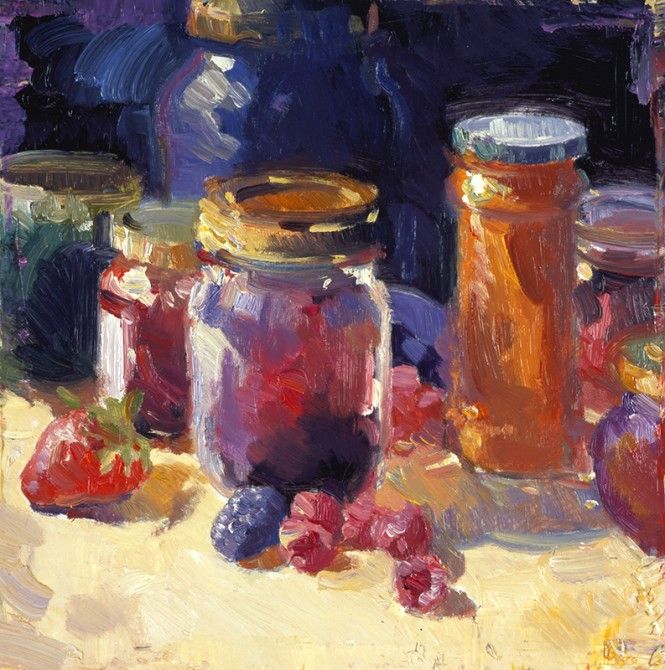Conservation
Jams were, in the past, the preferred way to preserve the most fragile fruits (for example: strawberries, apricots, blackberries) after harvest. It is the sugar that allows the jam to keep: it attracts the water by osmosis to the outside of the germs, which dries them out. If the amount of sugar is not sufficient to ensure this conservation at room temperature, a compote is obtained. White granulated sugar is generally used as unrefined sugar may contain impurities which may affect the shelf life.
When making homemade jams, it sometimes happens that a deposit of mold forms on the surface of the jam, usually of the species Aspergillus glaucus. To avoid this, it is necessary that the fruits are well cooked and that the jars are scrupulously cleaned and closed tightly to ensure optimum conservation. These precautions allow storage for up to a few years.
Nutrition
Jams are above all a product of pleasure. The nutritional characteristics of jams vary depending on the nature of the fruit (s) used. Apart from providing carbohydrates, they offer no nutritional value. You shouldn't rely on jams to balance your vitamin status. Few of the vitamins in fruit can withstand cooking in sugar and high heat. Only the antioxidant carotenes are more or less reserved. The minerals remain. But, apart from potassium, the fruits are not very rich. Jams are delicious sweet products to be consumed in moderation. 1 teaspoon of jam weighs 20 g.
Average nutritional value:
Average per 100 g: 200 to 250 Kcal (depending on the fruit): 30 g. Proteins: 0.5 g. Carbohydrates: 68 g. Fat: 0.1 g. Fiber: 1 g. Potassium: 105 mg. Magnesium: 6 mg. Phosphorus: 14 mg. Calcium: 12 mg. Iron: 0.5 mg. Carotenes': 50 ug. Vitamin C: 5 mg. Folate: 2 µg.

